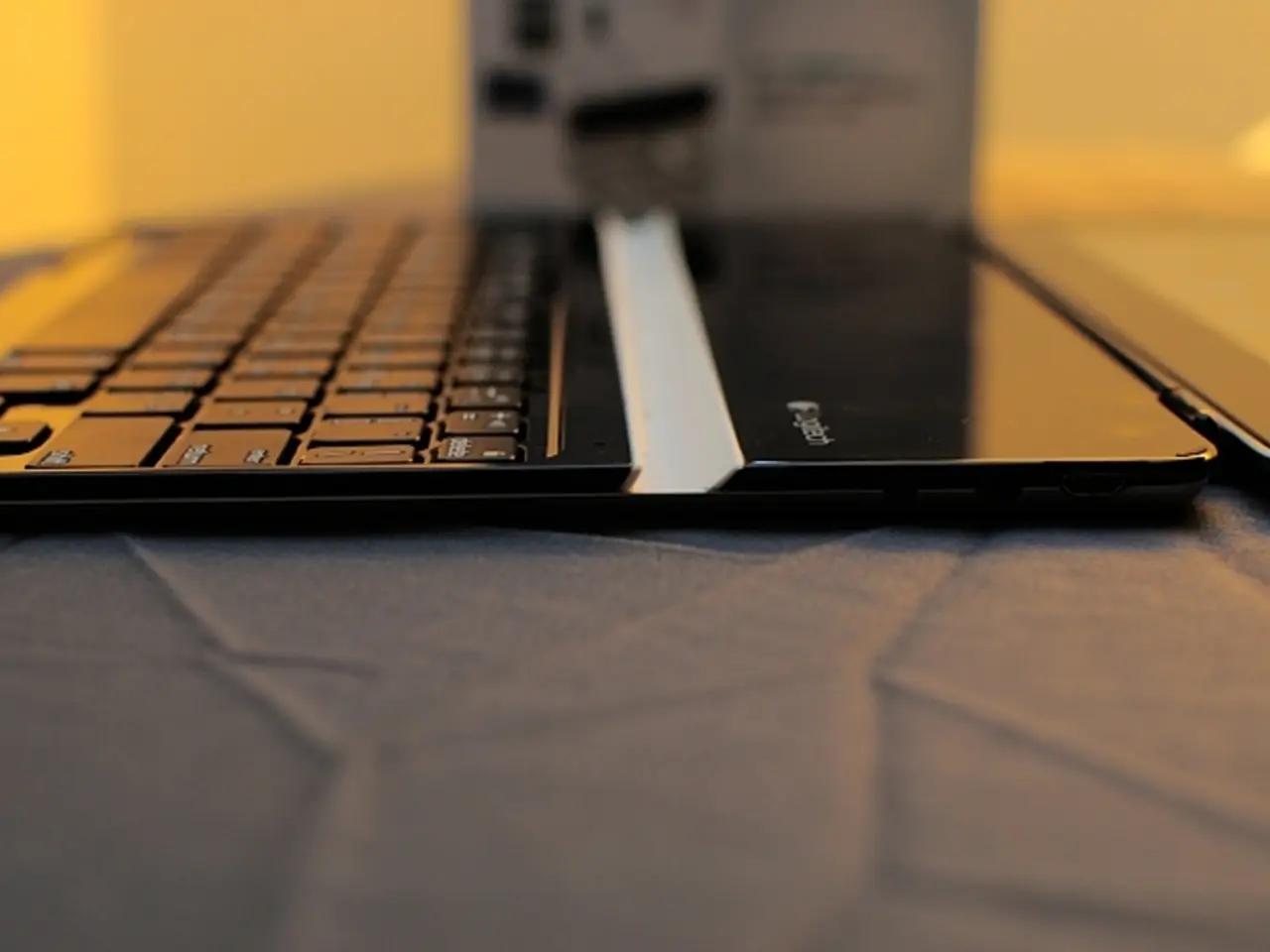"Origins of Mobile Computing: Unraveling the History of Initial Laptop Devices"
Laptops have revolutionized personal computing, empowering users to explore new realms of technology, from creative pursuits to gaming and personal organization. This transformation began in the 1980s, when the rise of portable computing paved the way for the development of other mobile devices, such as tablets and smartphones, which have become integral parts of modern life.
The journey towards portable computing can be traced back to the 1960s, when early mainframes were massive and expensive machines. However, it was the advent of rechargeable batteries, demonstrated by the Epson HX-20, that was critical in making truly portable computing possible and setting a new standard for future devices.
The Epson HX-20, introduced in 1981, is often considered the world's first laptop due to its built-in rechargeable battery, light weight of 3.5 pounds, and compact size that allowed it to fit in a briefcase. Around the same period, the GRiD Compass 1100 was released, considered the first clamshell laptop due to its sleek magnesium alloy case and clamshell design that provided protection for the screen and keyboard when closed.
The Osborne 1, introduced in 1981, was widely regarded as the first commercially successful portable computer, weighing around 24 pounds and featuring a five-inch CRT screen, two floppy disk drives, and a full QWERTY keyboard. Despite its bulkiness, it marked an important step towards portable computing.
The Osborne Executive, introduced in 1982, was an upgrade to the Osborne 1 that featured a larger screen and increased storage capacity. One of the first steps toward portable computing came in 1975 with the introduction of the IBM 5100, a briefcase-sized computer that was one of the first "portable" computers.
The development of the first laptops was dependent on significant advancements in technology, particularly miniaturization and the invention of the microprocessor. The Intel 8086 microprocessor, introduced in 1978, played a significant role in enabling portable computing due to its compact size and relatively low power consumption.
Display technology underwent significant advancements during this period, with the introduction of LCD (liquid crystal display) technology allowing for lighter, thinner, and more energy-efficient screens. This was a crucial step towards creating the sleek, lightweight laptops we know today.
The IBM ThinkPad 700C, launched in 1992, was a key milestone in the evolution of laptops. It was one of the first laptops to combine a trackpoint (pointing stick), a color screen, and a compact, professional design that appealed to business users. This marked a shift to premium, high-performance portable computing, influencing later laptop designs substantially.
These milestones collectively shifted computing from stationary, mainframe-dependent machines to personal and portable devices. The IBM ThinkPad set ergonomic and hardware standards that influenced an entire generation of laptop designs, emphasizing usability and performance in a portable form. The evolution also drove innovation in power management, input devices (trackpoints, touchpads), and display technology, laying groundwork for modern laptops and eventually for tablets and ultrabooks.
Modern laptops owe their existence to the pioneering efforts of the engineers and visionaries who dared to dream of portable computing, and their innovations continue to influence the design of laptops and other portable devices today. The first laptops had a profound impact on society, changing the way people worked, communicated, and accessed information, and breaking down barriers to computing. The educational sector benefited from the advent of laptops, as they provided students with access to digital tools and resources, enhancing the learning experience and preparing them for the technology-driven workplace.
In essence, the evolution of laptops from bulky, expensive machines to sleek, powerful portable devices has been a journey of miniaturization, innovation, and user-focused design. From the early attempts to make computing portable in the 1970s and 1980s to the launch of the IBM ThinkPad 700C in 1992, each milestone has brought us closer to the portable, powerful computers we use today.
The advent of rechargeable batteries and smaller, more energy-efficient screens, such as LCD technology, were crucial steps in the development of portable computing, enabling the creation of the first laptops like the Epson HX-20 and GRiD Compass 1100. These gadgets, born from the broader field of tech and technology, represent significant advancements in personal computing, revolutionizing the way we work, communicate, and access information.




